Isn’t it ironic? One of the most luxurious elements of any interior scheme—natural light—is absolutely free. But that doesn’t mean it’s easy to manage. When, where and how much sun a home receives are all variables that present challenges, calling on the designer to curate rays in a way that best serves clients and their spaces. No big deal, just another item on the project checklist: controlling the sun. Luckily, Lutron empowers designers to do just that with its extensive portfolio of precision-automated window treatments and more than 1,500 fabrics.
“I can’t think of a project where I don’t use Lutron motorized shades,” says New York–based designer Young Huh. In city high-rises and wide-windowed workshops—including her Chelsea office—the brand’s solar shades are the industry standard to deflect heat, minimize glare and provide privacy, gliding up and down on command in blissful silence. Huh opted for Sivoia QS rollers in classic white with a 3 percent “openness factor,” indicating a tight, light-impeding weave. Hardworking, neutral-toned performance materials make perfect sense in contemporary settings, with dual-sided fabrics countering warming climes by reflecting rays rather than absorbing them. For a bit more embellishment, though, Lutron’s textile choices range from naturalistic weaves to boucles and jacquards. For home theaters and bedrooms, blackout shades conjure total darkness, while curtains create a voluminous cocoon with the touch of a button. “When you walk into a giant Park Avenue living room and all the drapery sweeps open at once, it feels very sexy and wow,” the designer observes.
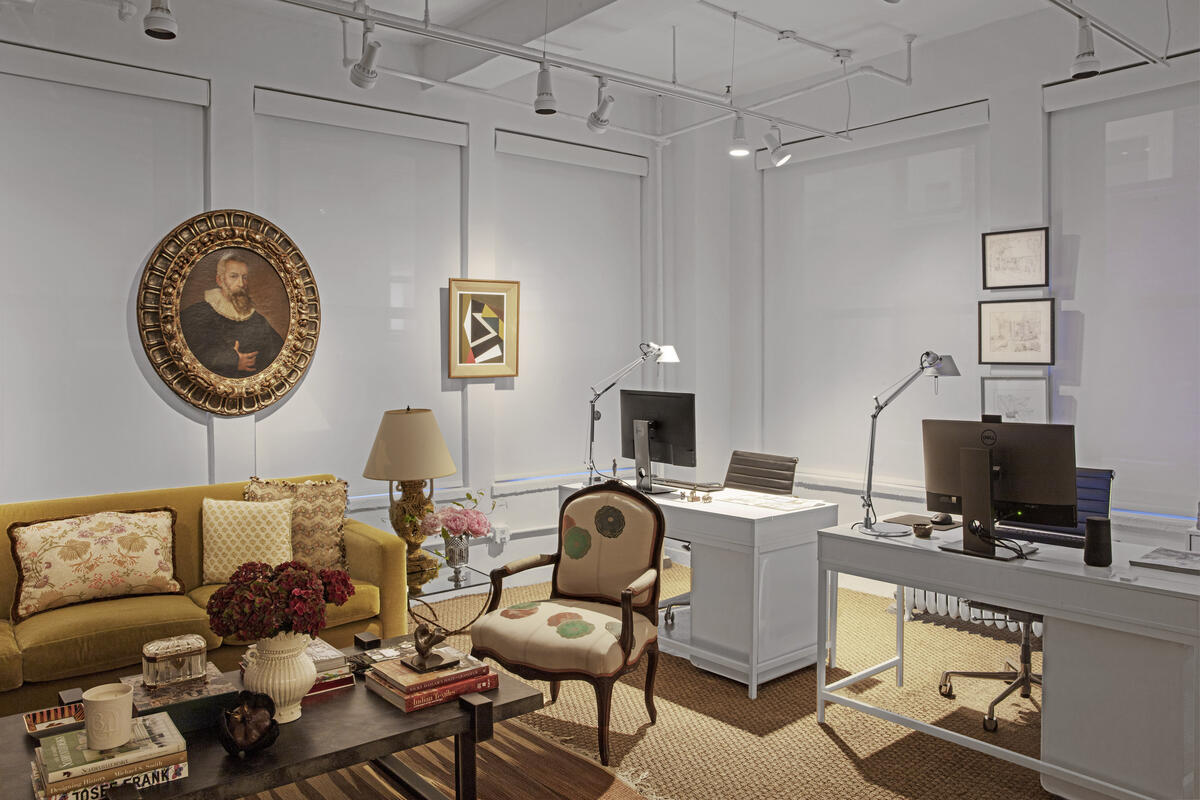
Depending on the style and project specifications, Lutron window treatments can be wired or wire-free, operated via app, smart-home system or remote control. If not pocketed into the drywall (virtually disappearing from view), motors are housed in mounted fascia—or in the case of the company’s popular Palladiom roller shades, concealed inside the shade itself and paired with sleek brackets that make a decorative statement. Seven premium metal finishes, including the just-released Aged Bronze, coordinate with Lutron’s keypads and Ketra downlights.
“Palladiom brackets are like jewelry for the wall,” says Cecilia Ramos, senior director of architectural markets at Lutron. Their art deco–like elegance embodies a commitment to thoughtful design, one of the three tenets that inform the company’s approach to the automated window treatment category. “Whether it’s the breadth of typologies, fabrics or finishes we offer, the beauty is in the details,” she says. For an ultraminimalist approach, roller shades can produce a subdued, monolithic screen. Honeycomb shades and horizontal sheer blinds add a bit more presence, diffusing light or obstructing it completely depending on the opacity of the fabric. The rustic touch of wood blinds can be contrasted with fabric-wrapped fascia. Running on recessed tracks, drapery unfurls in pinch pleats or ripple folds. And fabrication kits serve as the framework for designers to automate Roman shades in COM.
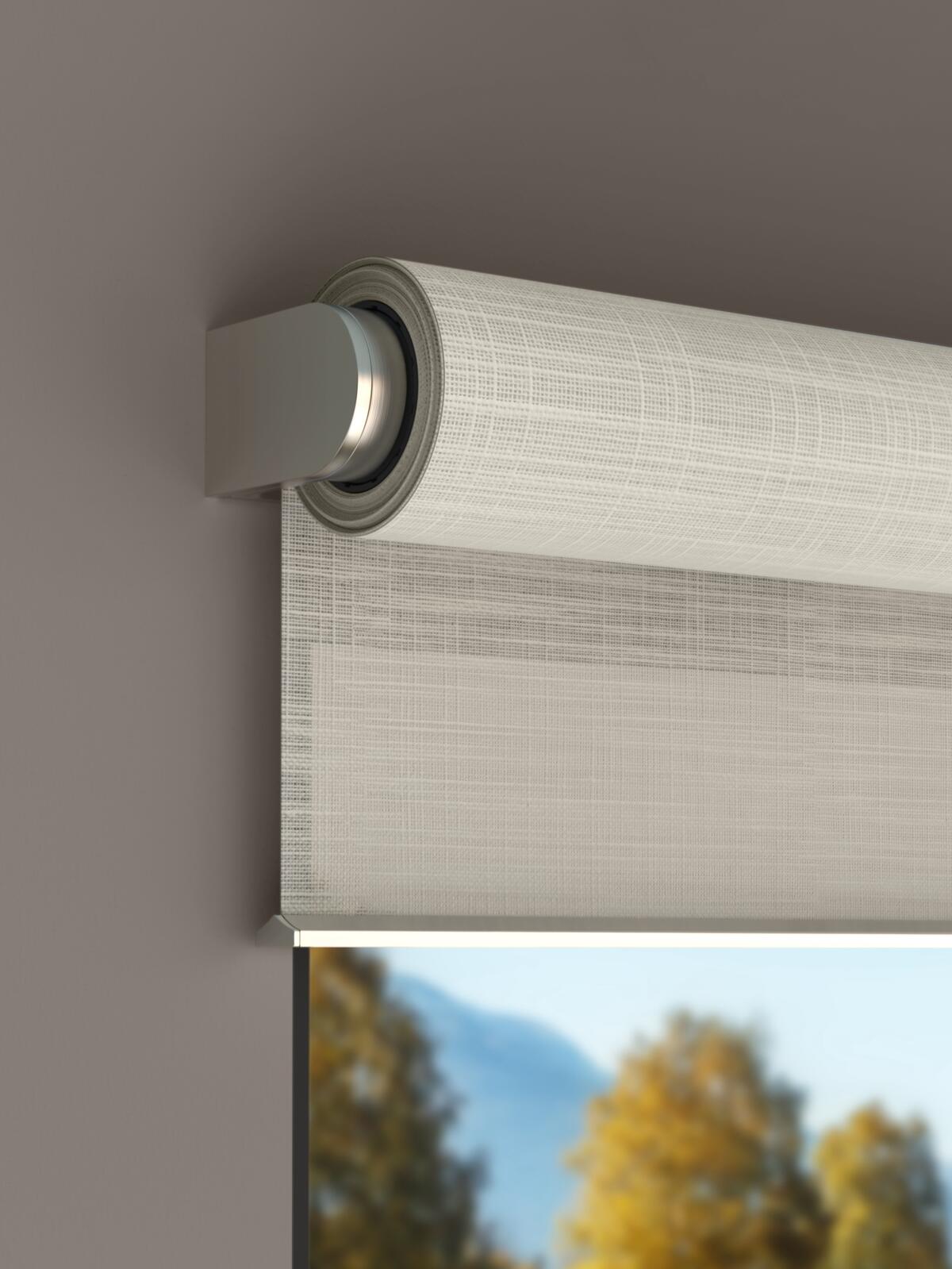
“It used to be that basic roller shades in heavy-duty blackout materials were the only motorized windowcoverings you could find, but now with Lutron you can specify a beautiful pattern with a Roman fold, then pair it with bespoke curtains,” says Huh. For one lavish project, she overlaid staple solar rollers with custom drapery made from “miles of gorgeous Hermès fabric” installed on Lutron hardware. “Layering allows you to do more traditional decorating with the modern convenience of automation,” she says. “It helps a room feel finished.”
The aesthetic focus extends to acoustics—part of Lutron’s intelligent performance, a principle equal in importance to style. At the leading edge of the “quiet luxury” movement, all its automated window options are meant to be seen, but not heard. “You want to notice the beauty of the shades, not the noise they make,” says Ramos, describing the near-silent operation as beyond compare in the market. Programmed so that their hem bars align within an eighth of an inch, multiple Lutron shades in the same space can be deployed in whisper-quiet choreography—what she calls “an interior designer’s dream” (and the kind of detail clients only spot if it’s awry). “What seems visually simple is technically quite complicated to execute, because you have to calibrate each motor to roll at the same time and calculate identical fabric lengths in advance,” she continues, “but Lutron excels at streamlining complex functions for the end user”—simplicity being the third tentpole of its motorization methodology.
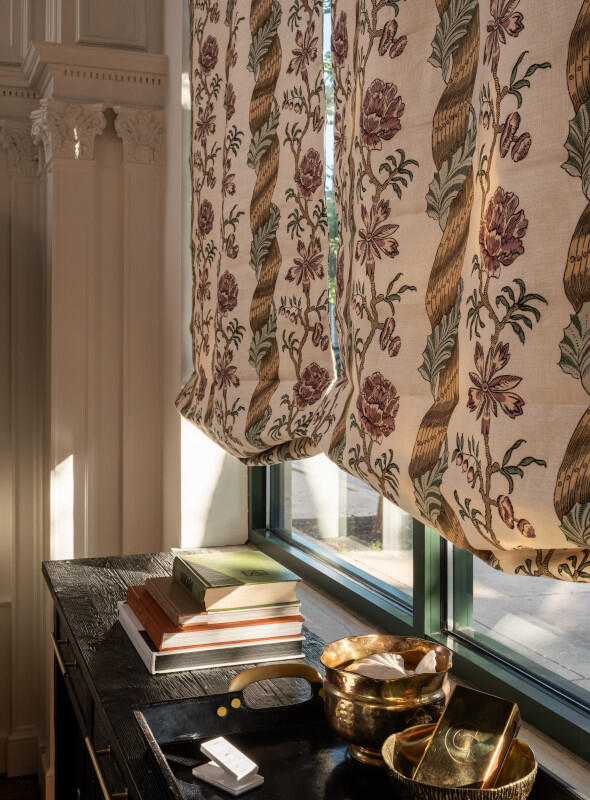
Taking that synchronization to the next level, the company recently debuted Natural Light Optimization, a function that preschedules shades to anticipate the movement of the sun. Knowing that it varies in intensity from dawn to dusk, windowcoverings are programmed to various positions over the course of the day that best let in light but block bothersome glare and intense UV rays that would otherwise fade artworks, rugs and upholstery. “The settings are unique to each home, taking into account its location, its orientation and the season,” Ramos explains. It’s a set-it-and-forget-it feature that protects interiors, but homeowners can pause the optimization whenever they choose—if, say, the family wants shades all the way down in the middle of the afternoon to watch a movie. “While standardizing the baseline settings, Natural Light Optimization puts a lot of power in the hands of the homeowner to customize usage,” says Ramos.
Easy to retrofit, Lutron’s battery-powered designs may be the most broadly accessible—the Triathlon Select series is available with 10 days’ lead time as part of the company’s quick-ship program. Accessibility is another bonus. “You can buy the D-cell batteries at any Home Depot, CVS or Walgreens, and they’re super easy to change out,” says Ramos. Whenever, that is, they finally need to be replaced.
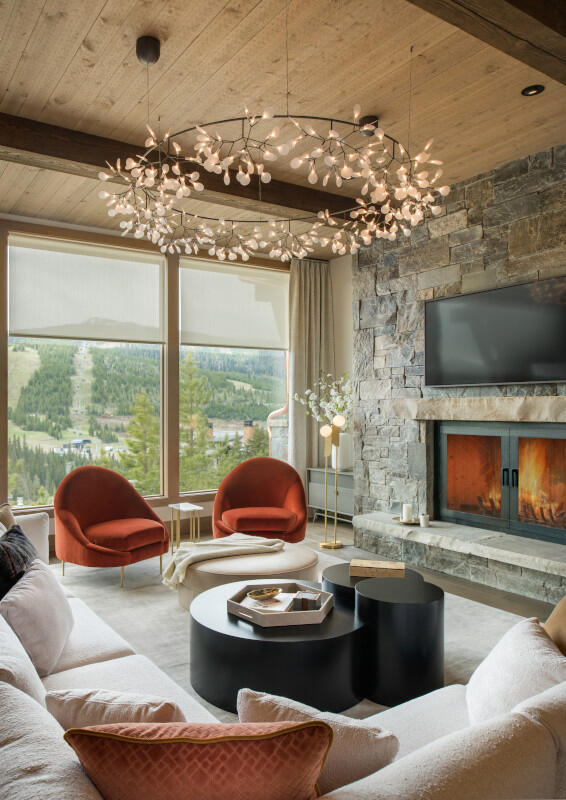
“It’s been two-plus years and we still haven’t had to replace ours,” says Huh of the shades in her studio. Alongside her white walls, she credits them with helping her work. “I analyze colors for projects all day, and anything other than a clean white space would distract from that,” she comments. Combined with Ketra recessed downlights, the motorized shades allow the designer to manipulate the quality of light to suit her purposes. “We’re in a New York building, but we have to imagine what fabrics and paints will look like in the bright sunshine of a beach house, for example, or a moody, candle-lit dining room.” Tweaking her Lutron system lets her replicate the environment she needs.
“The sun is often the greatest source of illumination in a room, so Lutron looks at windows as light fixtures,” adds Ramos. By integrating its motorized shades and drapery with its architectural lighting, the company crafts a complete design story in which the two components work in tandem, shifting throughout the day.
Along with the clear-eyed take on samples and swatches that her motorized shades allow, Huh and her team appreciate another aspect that’s less quantifiable but just as valuable: the soothing mood boost that comes from customizing their environment. Within the density of a city block, cast in the shadows of neighboring skyscrapers and facing the ever-shortening days of autumn, it makes a big difference to fine-tune the light temperature instead of succumbing to the soulless glow of fluorescent bulbs. Natural light filtered through the solar shades “gets softer as the afternoon progresses,” says Huh, and when darkness falls, she can swiftly, smoothly draw them closed, then turn up her Ketra downlights to generate some internal sunshine. As she happily proclaims: “No one in the office suffers from seasonal affective disorder!”
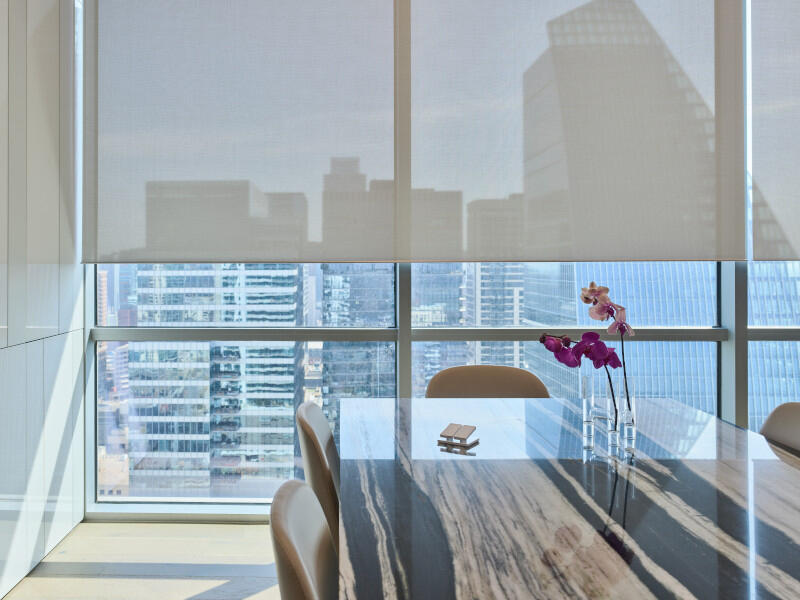
This story is a paid promotion and was created in partnership with Lutron.
Homepage image: Let the outside in with Lutron’s motorized shades, which block glare and fabric-fading UV rays while beautifully filtering natural light | Courtesy of Lutron





























